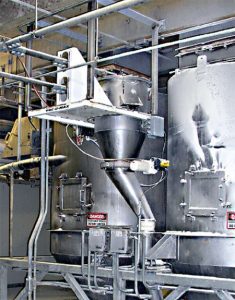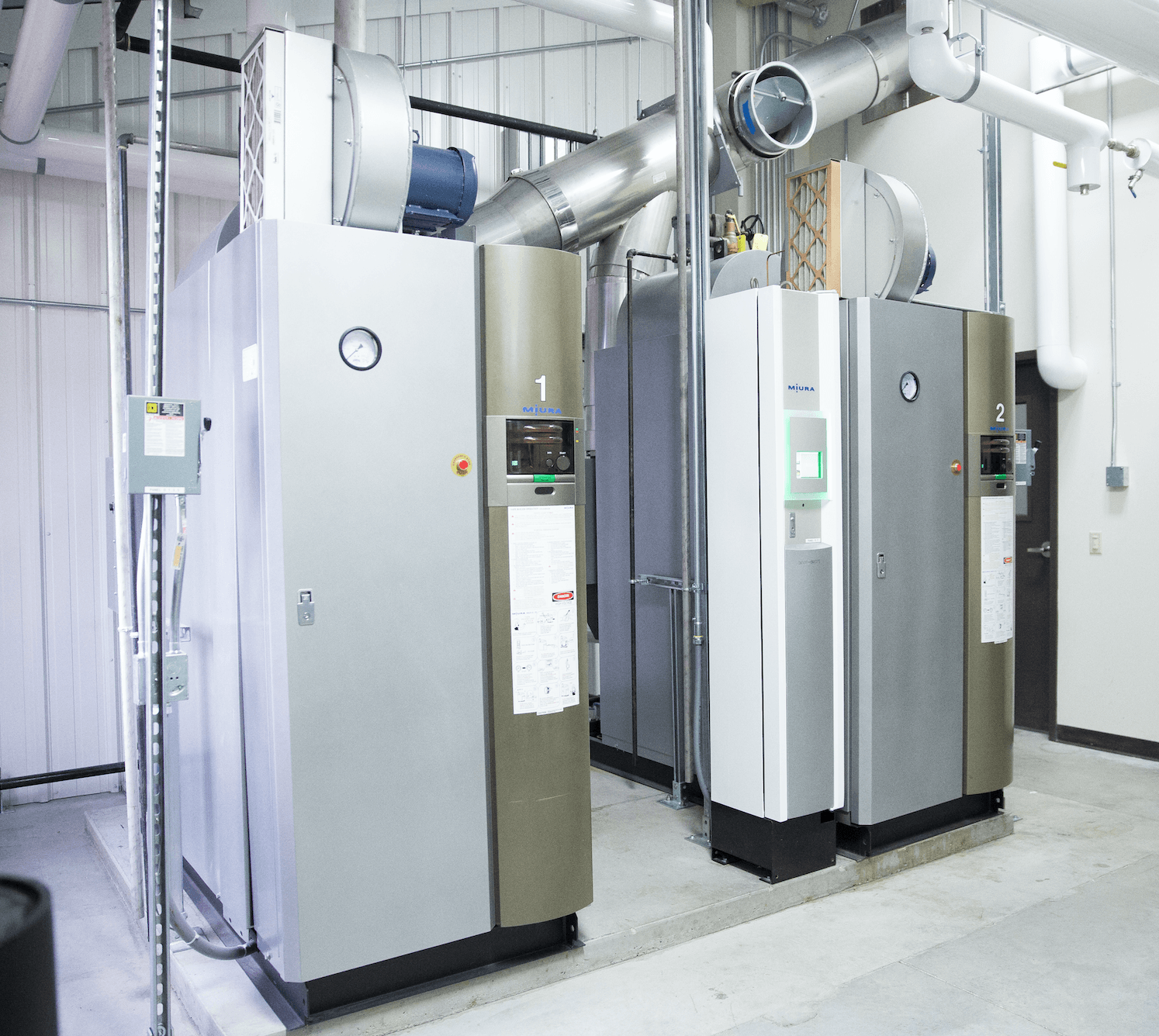Challenges (And Solutions) of Powders and Bulk Solids
Powering Powders
Powders and bulk solids can be balky and challenging, which is why handling and moving them needs special attention.
Powders and bulk solids are among the most challenging materials to handle in a food or beverage processing plant, for various reasons.
They require specialized equipment for unloading as well as conveying. They’re not discrete units, like products or packages – but they usually don’t flow freely like liquids, either. They’re liable to all kinds of flow interruptions. And in the worst-case scenario, they can cause electrostatic explosions with potentially tragic consequences.
“In a food or beverage plant, it’s not enough for a conveyor system to transfer ingredients from one point to another,” says David Nichols, vice president of sales and marketing for Volkmann USA (www.volkmannusa.com). “The ingredients need to be protected from contamination and degradation along the way. And when transferring powders, the conveyor system needs to prevent dust from escaping into the workplace and prevent the potential for an explosion.”
The flow issue is arguably the most important and pervasive.
CONVEYANCE OPTIONS
Handling powers and bulk solids is largely a question of matching them to the right kind of conveying system. The major alternatives are pneumatic, flexible screw, tubular cable and vibratory bed.
-
Pneumatic conveyors use compressed air to blow product through a tube.
- Flexible screw conveyors use an auger, usually stainless steel, inside a polymer or stainless-steel tube. They can be routed at any angle (though not, obviously, as curves or bends).
- Tubular conveyors use disks, usually polymer, strung on a cable through the interior of a pipe, that drag the product along.
- Vibratory conveyors use a vibrating or reciprocating motion to move product along a bed or trough without any use of belts or other propulsion.
Pneumatic conveyors are more suited to light, finely grained products like flour. Flexible screw conveyers are good for products that are prone to pack, cake, seize or smear. Tubular conveyors are also good for such products, as well as blended ones like trail mix. Vibratory conveyors work well with bulk product with large but fragile particulates. With pneumatic conveyors, the basic choices are dense-phase or dilute-phase conveying.
KEEPING IT CLEAN
Much of the difficulty in certain applications stems from cleaning. Products that are prone to smearing, or otherwise cling to surfaces, require the systems handling them to be cleaned frequently. Especially in applications that require frequent changeover. To be considered cleanable, a material handling system should either have clean-in-place capability or be designed to be disassembled by hand with minimal effort. Pneumatic systems are generally the hardest to clean. Although dense-phase systems are easier because they make sticky material less likely to cling to surfaces, Nichols says.
Flexible screw conveyors often are designed with the augur easily removable. Tubular conveyors can be effectively cleaned with a “pig,” a sponge-like attachment that’s slightly oversized, to effectively wipe the tube’s interior surface.
Product flow is especially important with vibratory conveyors, which transport product in an open bed. Evenly spreading product across the bed is necessary to properly feed sorters, freezers, dryers or whatever equipment is immediately downstream. This can get especially challenging when the product is oily or it’s a frozen environment, both of which can inhibit movement on the conveyor bed.
To combat this, Key Technology (www.key.net) has vibratory conveyors with steam pipe
s underneath the bed and belt conveyors with a specialized tail roll – a shape roller that removes the ice from the belt, says Rudy Sanchez, process systems product development manager.
Another problem can arise with bulk product that has to be filtered through screens. It’s common for larger-size particulates, like nuts, to become stuck in the screen holes. Key has designed a “ball-deck” screen for its Iso-Flo conveyor. It comprises two “sandwiched” screens with food-grade rubber balls in the middle that bounce around and dislodge particulates stuck in the screens.
LOADING AND UNLOADING
The challenges of moving powders and bulk solids are not confined to the conveyor that does the handling. One of the biggest ones is loading them into the system and unloading them at the other end.
As with many challenges, it’s mostly a matter of using the right equipment. It starts with the bags from which ingredients are unloaded (or into which product is loaded).
“One of the biggest challenges in unloading is making sure that you have a properly applied bulk bag for the material,” says Craig Thomas, senior product manager at Hapman (www.hapman.com). Such a bag will be square on the bottom.
“Starting off with a square base on a bag fill is very important, he says. “The bag should be hanging when the fill starts so the bottom of the bag will ‘dome down.’ When the bag is lowered to the pallet, that material will be pushed into the corners, yielding a stable base for the bag. This will assist in producing a bag that will stand up and not be a leaner, making it easier and safer to handle.”
It’s also important to feed the bags with the right kind of equipment. “A discharge spout that is too short or too small of a diameter can cause problems with flow and cause dusting,” Thomas says.
Karl Seidel, marketing director at Cablevey Conveyors, says that when filling bulk bags, “flood feeding” must be avoided, because it can lead to overflow or the material “getting chomped away as it moves into the flow.” Vibratory feeders, which shake the output into an even stream, can meter the flow into the bag while avoiding problems.
Dust is often unavoidable when fine powders are emptied into bulk bags. Clamping the bag’s neck to the discharge spout is the most obvious solution, but it’s not always possible. Dust collectors – basically fixed vacuum cleaners – are available either as stand-alone options or integrated into the system.







